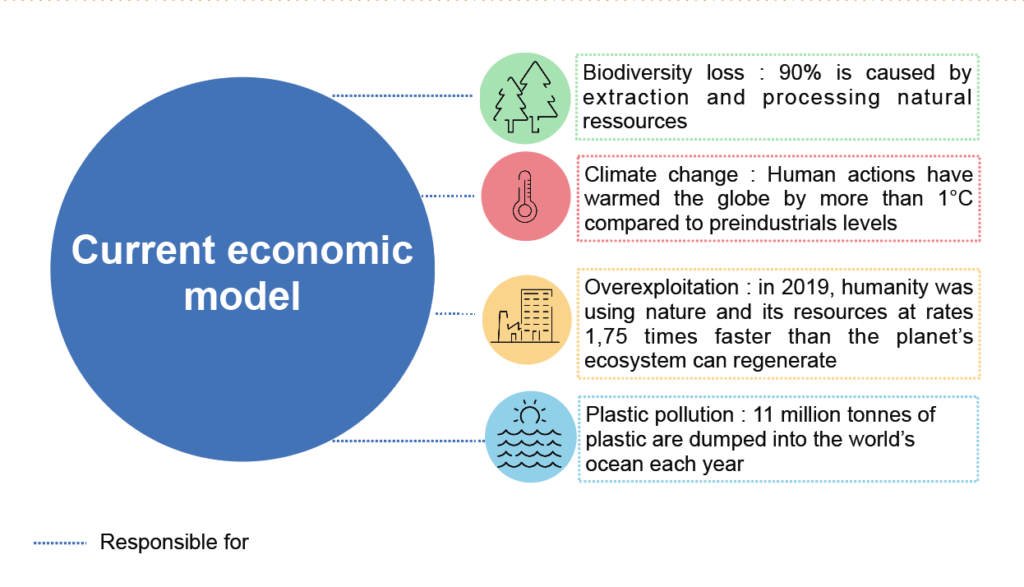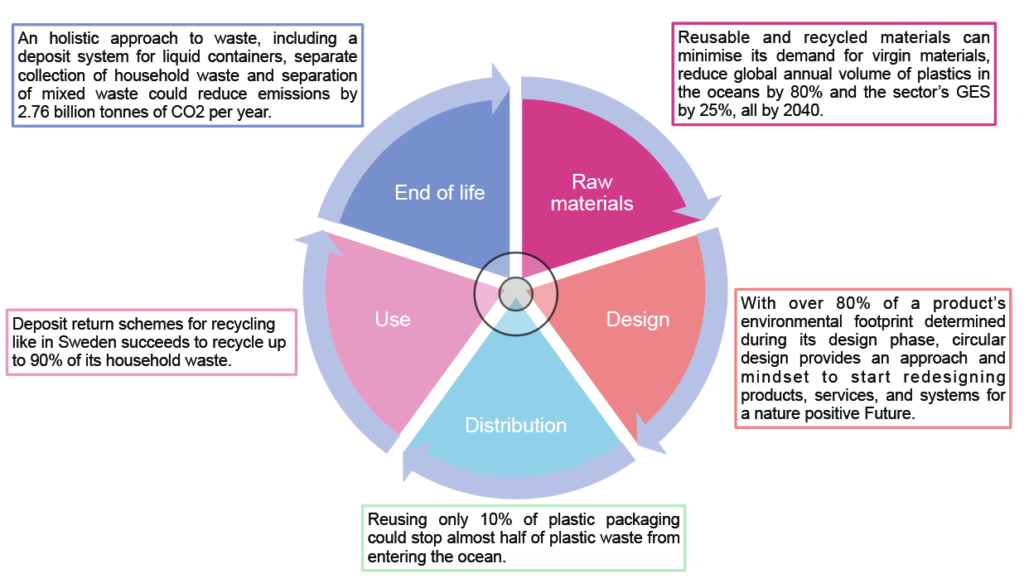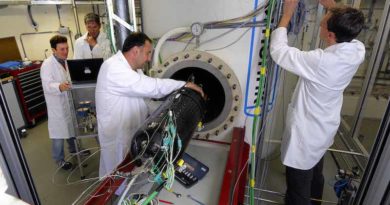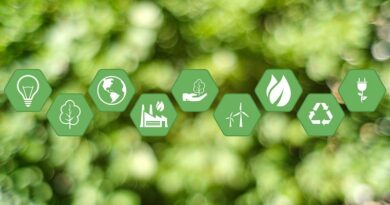
Circular economy: a concrete solution to climate and biodiversity challenges
A pioneer in sustainable development since the early 1990s in France, Citeo has built its expertise by imagining a new life for household packaging and graphic paper. Citeo has developed eco-design, collection, sorting and recycling services within the framework of Extended Producer Responsibility (EPR), thanks to a mutualised action of its client companies who are at the initiative of its creation, and in partnership with local authorities and sorting and recycling professionals.
In order to bring an answer to the ecological emergency and accelerate the necessary transformations, Citeo is committed to work with all stakeholders to ensure that production, distribution and consumption at national and European levels are adapted to the preservation of our planet, its resources, biodiversity and the climate through the circular economy model.
The Covid-19 pandemic and the latest extreme weather events remind us once again of the threats posed to humanity by the erosion of biodiversity, and the urgent need to mobilise all stakeholders to answer to the ecological crisis. In this context of awareness of the climate crisis, the latest report of the Intergovernmental Panel on Climate Change (IPCC) published on 9 August 2021, deplores that even if the commitments made during the Paris Agreement were respected, they would lead us to a global warming of 3°C. It confirms the anthropogenic origin of global warming and its magnitude, due in particular to our linear consumption and production patterns. The latest report by the IPCC and the Intergovernmental Panel on Biodiversity and Ecosystem Services (IPBES) also stresses the importance of protecting biodiversity in the fight against climate change.
Such systemic change can be catalysed by the circular economy. This includes reducing, reusing and recycling packaging and paper, as well as making better use of materials at different stages of their life cycle, notably through eco-design.
The next coming months will be important for the fight against the climate crisis with the hope that it be followed by a clear political vision and translated into impactful actions by public authorities and industries, in the light of IUCN, COP 26, COP 15 at international level, and the French Presidency of the Council of the European Union in the first semester of 2022.
Because biodiversity and climate change are not two separate crises but two aspects of the same global crisis, Citeo, by virtue of its “raison d’être” and its status as a “purpose company”, wishes to share its recommendations concerning:
The promotion of the EPR scheme as a concrete tool to fight plastic pollution within the negotiation of the international treaty on plastics pollution;
The implementation of a Carbon Border Adjustment Mechanism that is up to the challenges of ecodesign;
The deployment of an incentive fiscal system to accelerate the deployment of the circular economy;
The generalisation of the sustainable corporate governance model and the extra-financial accounting in line with the challenges of the circular economy.
For a treaty to expand EPR Systems internationally in order to fight plastic pollution
In order to fight against the pollution of natural spaces generated by plastic waste, a draft resolution on an internationally legally binding instrument will be examined at the United Nations General Assembly in 2022. Convinced of the need to provide a global and coordinated answer to this challenge, Citeo supports, alongside numerous companies and environmental associations, the draft resolution for the adoption of a legally binding global agreement. This treaty must therefore promote a circular economy encompassing the entire life cycle of plastic products and EPR systems to best fight against litter and integrate them into the circular economy loop. France and the European Union – as precursors of public policies in terms of reduction, reuse, recyclability, integration of recycled materials, and implementation of EPR systems -must be at the forefront of an international response to this 21st century challenge.
For a Carbon Border Adjustment Mechanism that is up to the challenges of ecodesign
The EU has managed to decouple its greenhouse gas emissions (-24%) from its economic growth (+60%) between 1990 and 2019. However, these figures do not take into account emissions from international trade. At the heart of the legislative proposals of the “Fit For 55” package presented by the European Commission on 14 July 2021, the Carbon Border Adjustment Mechanism (CBAM), which is inspired by the emissions trading system, would enable the EU to extend its rules on emissions to companies operating on its territory and thus combat carbon leakage.
Citeo supports this mechanism as an efficient tool to avoid producers of virgin material to relocate their activities to regions of the world subject to less coercive environmental rules.
The CBAM should enable efficient management of resources within the internal market while contributing to the objective of carbon neutrality. It will be necessary to support complementarity between the CBAM, the European taxonomy and the Sustainable Products Initiative.
Therefore, Citeo recommends that this mechanism be applied to all raw materials in order to:
Strengthen the European recycling market;
Support measures aimed at integrating recycled materials;
Contribute to closing the price gap between virgin and recycled materials;
Support an equivalent level of competitiveness between products incorporating recycled materials and those made from virgin materials.
For an incentive fiscal system to accelerate circular economy
Finance is a key lever for achieving the ambitious goals of economic prosperity, social inclusion and environmental regeneration.
The World Conservation Congress, held in Marseille last September, made a strong call to large companies and other investors to analyse the potential impact of new investments on nature at an early stage, favouring those that benefit nature.
In this perspective, the classification system of sustainable economic activities, as foreseen by the European taxonomy, should recognise the complementarity between circular economy activities and climate change actions.
In this perspective, Citeo supports the implementation of a taxonomy accelerating the deployment of the circular economy, that would take into account:
The waste hierarchy;
The reduction of overpackaging and the reflection on the right balance between the reduction of packaging and the fight against food waste;
The development of new complementary recycling technologies, including chemical recycling;
Selective collection, by promoting new collection systems;
Disruptors to the recycling process;
The fight against substances of concern.
Furthermore,
The new own resources correlated to non-recycled plastic packaging, which is included in the European recovery plan, must be a real lever to accelerate the circular economy and the preservation of natural resources.
Consequently, the transposition of this measure at national level must provide an incentive for all the plastic value chain players while meeting a common environmental ambition, and without compromising the functioning of the internal market. Thus, according to Citeo, this measure must, at the Member States level, concern virgin materials only, to discourage the purchase of virgin materials outside the EU, while favouring the purchase of recycled materials to so it combine environmental preservation and industrial resilience.
For moving the environmental impact from “extra financial” to “financial” reporting in accounting rules
In line with the European Commission’s initiative for sustainable corporate governance, there is a need to improve the European regulatory framework to prioritise long-term sustainable value creation over short-term profits, while aligning the interests of companies – their shareholders and managers – and society by including the environmental impact of industries within the accounting process, moving from the “extra financial” to the “financial” reporting.




